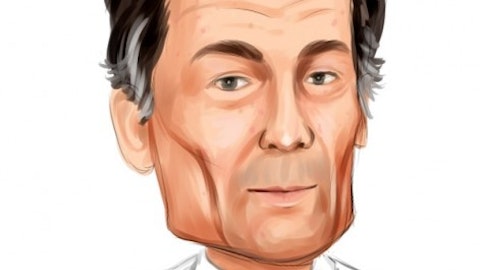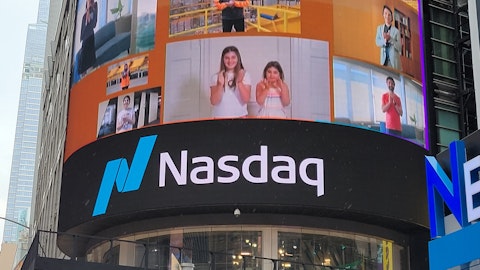If one’s doing a new build-out of a 400G or an 800G, and you have the ability to reduce cost in so doing, that is implemented very fast. So that’s part of the reason that we would see and believe that the rebound will be extremely strong because of new technologies where we have really a very strong partnership with leaders. So exactly how steep that ramp will be, I cannot say. Will the ramp come? It appears from inventory levels presently it will come, and it should come fairly shortly, exactly when, I don’t know. But I did state we have not yet seen the increase in purchase orders, but we’re very prepared, other than in Silicon Photonics, but we’re very prepared to capitalize on it when it comes. Hopefully that answers your question, Richard.
I really don’t have more colors to add to that.
Richard Shannon: That was very helpful. We appreciate your position and visibility, so thanks for portraying that one. I guess this question may be for Russell or Oren here, but I think some of the big questions we get, and I think you’ve had posed to you many times in the past year, that I think are especially important given we’re going through an inventory cycle in parts of your markets as well as the typical calendar seasonality that you experience. So I guess the big question we’re getting is, how do we think about your first quarter seasonality? You typically don’t give guidance more than a quarter out, but are you seeing anything that would suggest it’s going to be meaningfully different than normal, which I think is kind of a little bit down sequentially in the first quarter?
Russell Ellwanger: You are correct. We don’t give guidance longer term than one quarter. I honestly think that Q1 seasonality is an impact that everyone faces each year. There’s been a few years where we’ve been able to capitalize against it by having entered into a new strong market with offerings, but I think the industry itself expects a Q1 seasonality. I don’t think that this year will be different as far as what the industry will be experiencing.
Richard Shannon: Okay, fair enough, that’s helpful. One more question.
Russell Ellwanger: I’m sorry, because you asked about data center. Data center is data center, and that is where it’s at. But I had mentioned specifically one other area, it’s not data center specifically, but it is the phased array that is used for satellite, and that is a very, very big market that has come about that we’re very active in and got a strong design win with a first-year provider. So we see that in addition to a data center rebound as a strong tailwind for what we’re doing with Silicon Germanium. And it’s not data center itself, but it really is somewhat tied into the same application space.
Richard Shannon: Okay, thanks for the additional detail, Russell. So I’m going to ask one more question, and I will jump back into the queue here. But kind of big picture, you had some really interesting comments across a number of markets. Obviously, silicon photonics, power, display, sensors, and I probably missed some here. When you think about over, say, I don’t know, take a time frame, like say two years, are any of these going to be much more powerful to your revenue contributions than any others, or are they all kind of within the same area? How would you characterize them or even rank them?
Russell Ellwanger: What we’re doing with advanced 300mm, 65nm BCD, and a very advanced and aggressive roadmap on our BCD platform, as I stated, the major catalyst for what we’re doing in the New Mexico factory, I think that that was — probably will be the biggest incremental growth in the company.
Richard Shannon: Okay, perfect. Thank you.
Operator: The next question is from Natalia Winkler of Jeffries. Please go ahead.
Natalia Winkler: Hi. Thank you for taking my question. I have a couple. One is on the Silicon Photonics. Russell, could you please speak about the market share dynamics that you guys are seeing in Silicon Photonics? Obviously, you’ve been — your market share in Silicon Germanium has been the leading. I’m just curious if you’re seeing similar or any different competitive dynamics in Silicon Photonics?





